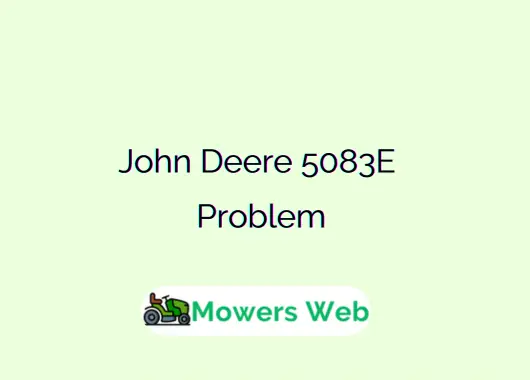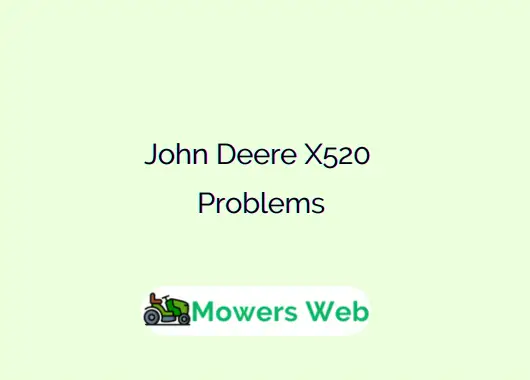This guide highlights the most reported John Deere 5083E problems, their likely causes, and practical troubleshooting tips to help keep your tractor running smoothly.
John Deere 5083E Problems
1. Shuttle Shift and Gear Engagement Problems
A frequent complaint among 5083E owners is the tractor’s failure to move forward or reverse even after engaging the gear. This issue is often related to the power reverser or shuttle system.
Common Causes
- A stuck or malfunctioning engagement override valve can prevent gear engagement.
- Electrical issues, such as a faulty relay or switch, can interfere with the shuttle system.
- Hydraulic control valve problems or internal leaks can cause shifting failures.
- Worn linkage or debris (like mud or manure) buildup in the shuttle system can restrict movement.
Fixes
- Ensure the override valve functions correctly and the clutch is cycled properly during startup.
- Inspect all electrical components connected to the shuttle system for continuity.
- Clean and inspect the hydraulic control valves for blockages or leaks.
- Lubricate and clean the shuttle linkage to remove debris and prevent corrosion.
Related John Deere Shuttle Shift Problems(7 Causes + Solutions)
2. Fuel Delivery and Starting Problems
Another recurring issue is difficulty starting, stalling, or a feeling that the tractor is “not getting fuel.”
Common Causes
- Air leaks in the fuel system, especially around filters and lines.
- Clogged or old fuel filters that restrict fuel flow.
- A weak or failing lift pump, which prevents proper fuel delivery.
- Air trapped in the system after replacing filters or fuel lines.
Fixes
- Inspect all fuel hoses and fittings for cracks or loose clamps.
- Bleed the fuel system to remove trapped air.
- Replace the fuel filter every 300 hours of operation.
- Test the lift pump and replace it if it fails to maintain adequate pressure.
- Check the injection pump for blockages or internal wear.
Related John Deere Regen Problems(7 Causes + Solutions)
3. Hydraulic Chatter and Performance Issues
Some owners experience chattering noises, sluggish hydraulic response, or instability while using the loader or three-point hitch.
Common Causes
- Air trapped inside the hydraulic system.
- Leaks in hoses, fittings, or control valves.
- Use of the wrong or contaminated hydraulic fluid.
- Weak or worn hydraulic pump.
Fixes
- Bleed the hydraulic system thoroughly to eliminate air.
- Replace damaged seals and fittings that may allow air or fluid leakage.
- Use the recommended John Deere hydraulic fluid and check levels regularly.
- Test the hydraulic pressure using a gauge to identify weak components.
- If the tractor feels unstable on slopes, add rear ballast or widen the wheel track for better balance.
4. Clutch Pedal and Engagement Problems
Clutch problems are also reported in some John Deere 5083E models, including stiffness, jerky engagement, or complete pedal failure.
Common Causes
- Broken or weak clutch return spring.
- Air is trapped in the hydraulic clutch system.
- Leaking or worn master/slave cylinders.
- Misadjusted clutch pedal travel or linkage wear.
Fixes
- Inspect and replace the clutch return spring if broken or worn.
- Bleed the hydraulic clutch circuit to remove air bubbles.
- Replace faulty master or slave cylinders if they leak fluid.
- Adjust the clutch pedal free play according to the service manual.
- Lubricate the clutch linkage and pivot points regularly.
Related John Deere Bolt Torque Chart(Complete Guide)
5. Electrical and Starting System Failures
Some 5083E owners face electrical problems where the tractor won’t start even though the dashboard lights come on.
Common Causes
- Corrosion inside the battery cables, especially the negative cable.
- Loose or dirty battery terminals.
- Faulty starter solenoid or starter motor.
- A weak or dying battery is unable to provide enough current for cranking.
Fixes
- Inspect the entire length of the battery cables, including inside the insulation.
- Clean and tighten all battery terminals and grounding points.
- Test and, if necessary, replace the starter solenoid or motor.
- Ensure the battery is fully charged and load-tested for performance.
Related Hydrostatic Transmission Slipping When Hot (8 Causes + Solutions)
6. Hydraulic Stability and Loader Balance Issues
Some users report the 5083E feeling unstable on uneven ground or slopes, especially when a front loader is attached.
Common Causes
- Uneven weight distribution between front and rear axles.
- Insufficient rear ballast when using heavy front attachments.
- Narrow wheel track or improper tire pressure.
Fixes
- Add rear wheel weights or ballast in the tires for better stability.
- Widen the rear wheel spacing if working on slopes.
- Keep tire pressure consistent across all wheels.
- Avoid carrying heavy loads high above the ground on uneven terrain.
7. Miscellaneous User-Reported Issues
Other occasional issues include:
- Wear and tear on the electronic reverser due to debris or manure buildup.
- Minor hydraulic leaks around fittings and hoses over time.
- Engine overheating is caused by blocked air intakes or a dirty radiator.
- Difficulty accessing or replacing certain filters due to the tight component layout.
Related John Deere Cool Gard 2 Equivalent Chart(Top 10 Best Options)
Maintenance and Prevention Tips
To keep your John Deere 5083E operating reliably, regular preventive maintenance is crucial.
- Follow the service schedule: Replace filters, fluids, and seals as recommended by the manufacturer.
- Inspect and clean fuel and hydraulic lines regularly to prevent blockages.
- Bleed the systems (fuel, clutch, and hydraulics) whenever maintenance involves opening lines.
- Use genuine John Deere fluids and parts to ensure compatibility and longevity.
- Keep electrical connections clean and free of corrosion.
- Add proper ballast and check tire pressure to improve traction and stability.
- Store your tractor properly, away from excessive moisture and dust, to prevent corrosion and contamination.
Final Thoughts
The John Deere 5083E is a tough and capable utility tractor, but it isn’t without its faults. Most of the issues reported, such as shuttle shift delays, fuel delivery problems, clutch stiffness, and hydraulic chatter, can be managed with regular inspection and timely maintenance.
With proper care, attention to detail, and adherence to recommended service intervals, the 5083E can continue to deliver reliable performance for many years of agricultural work.




